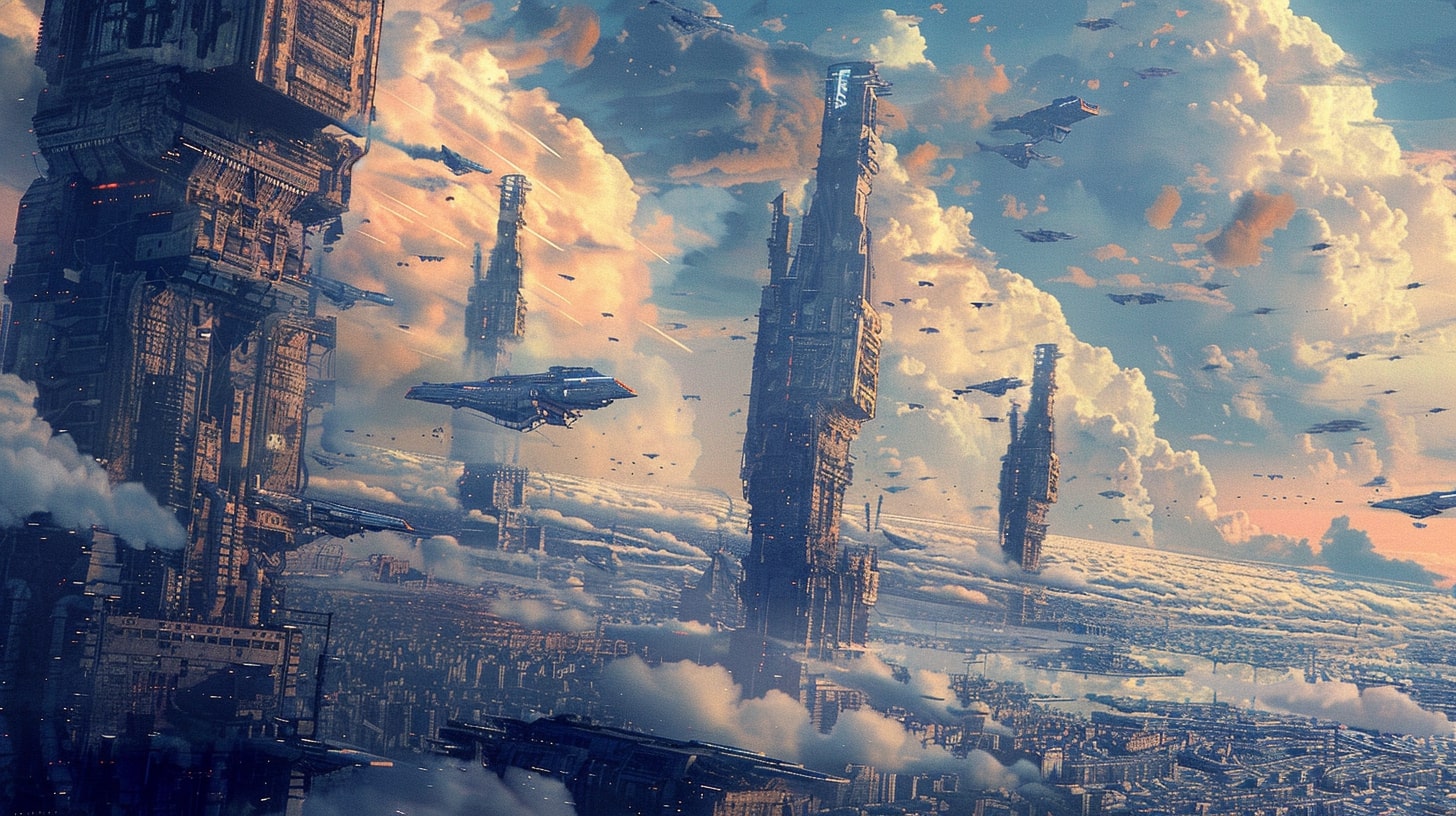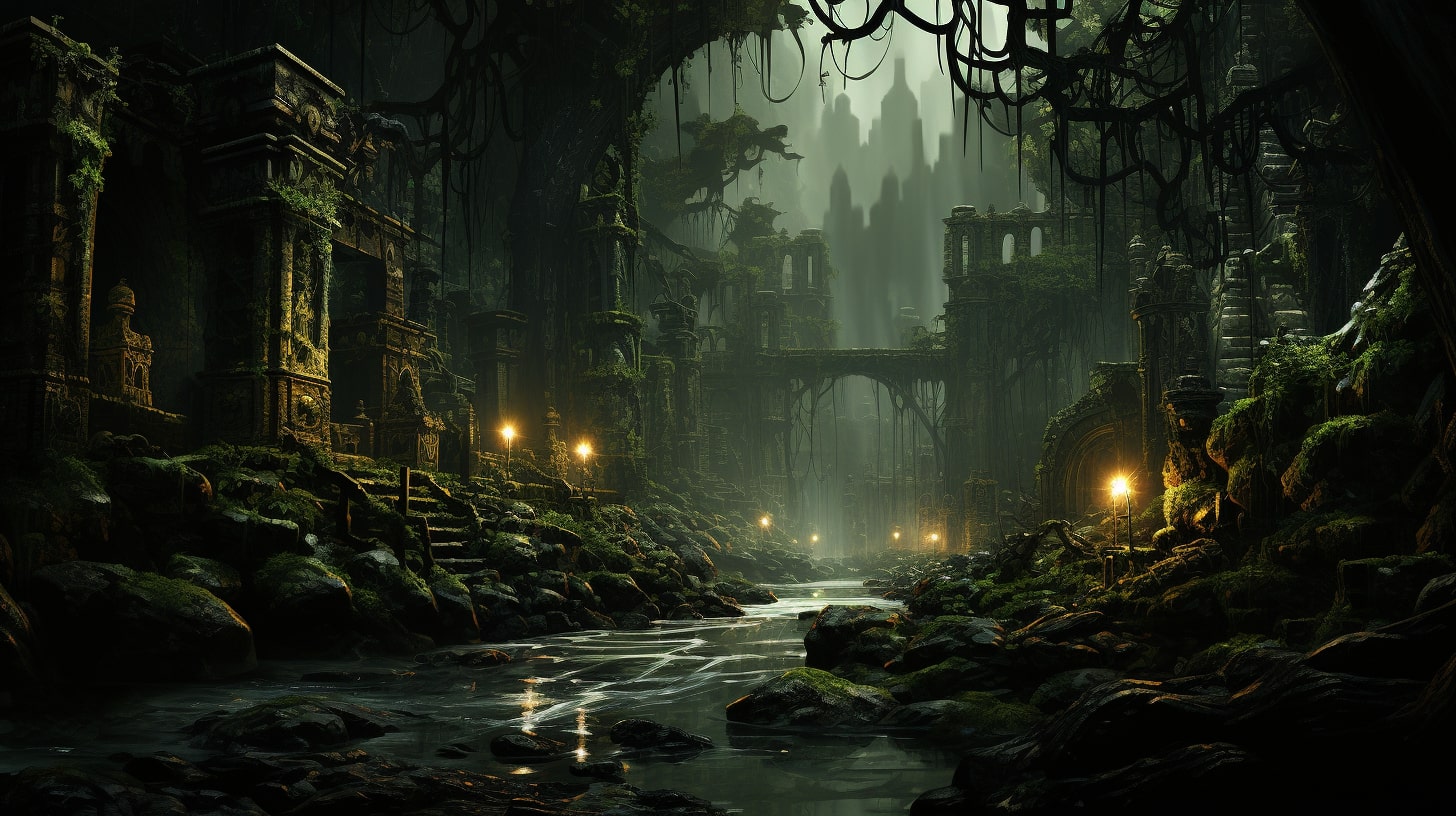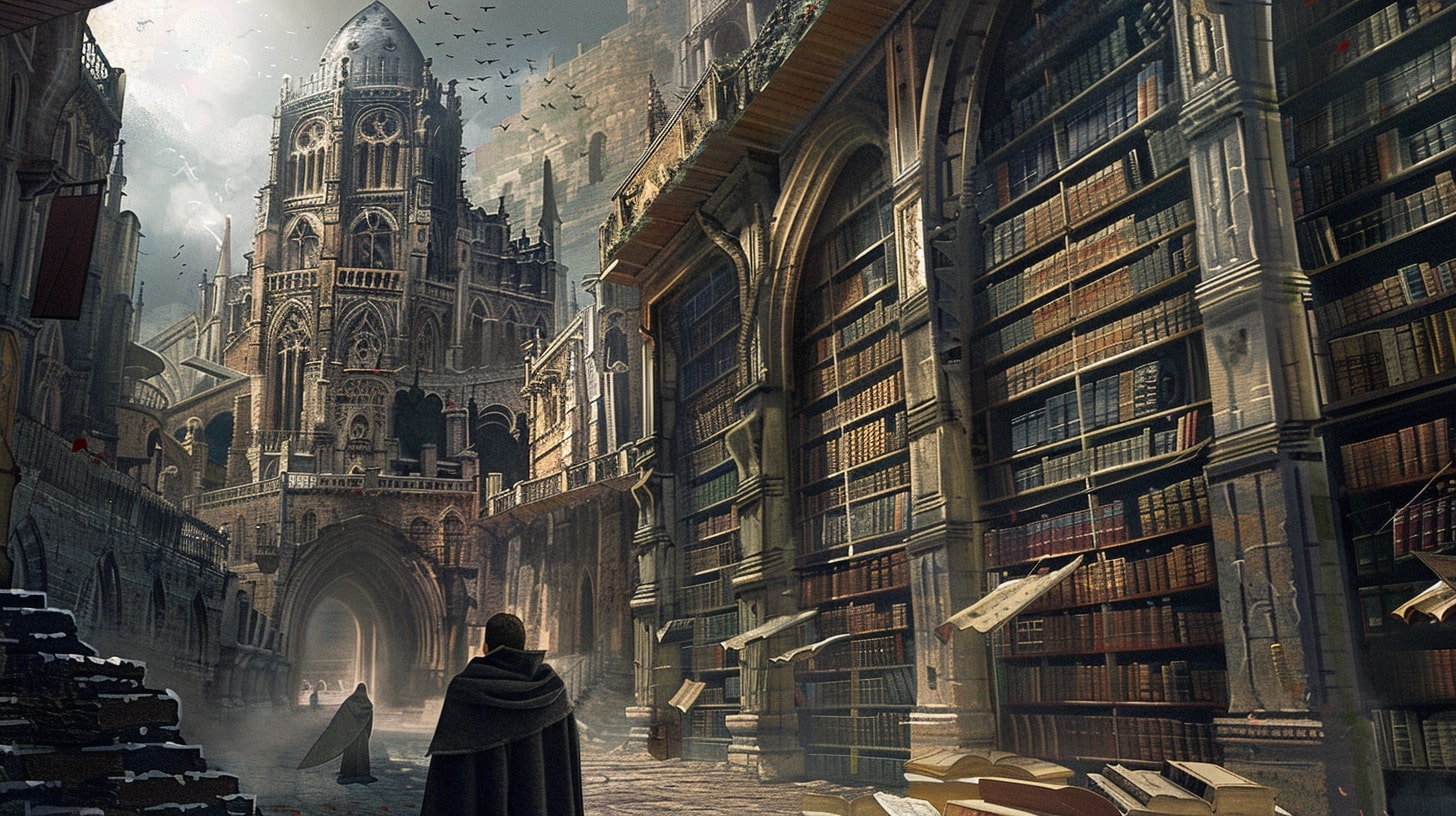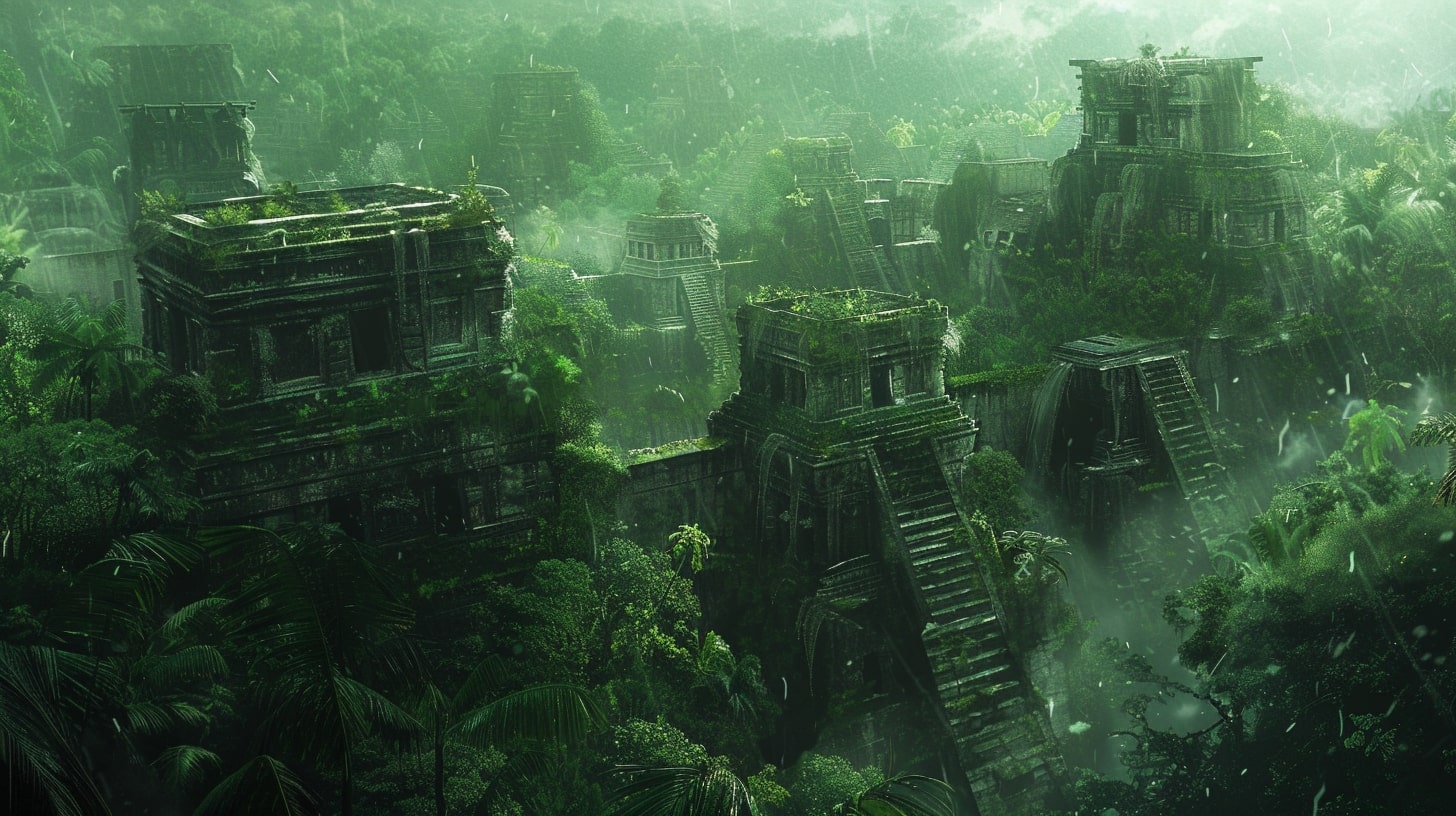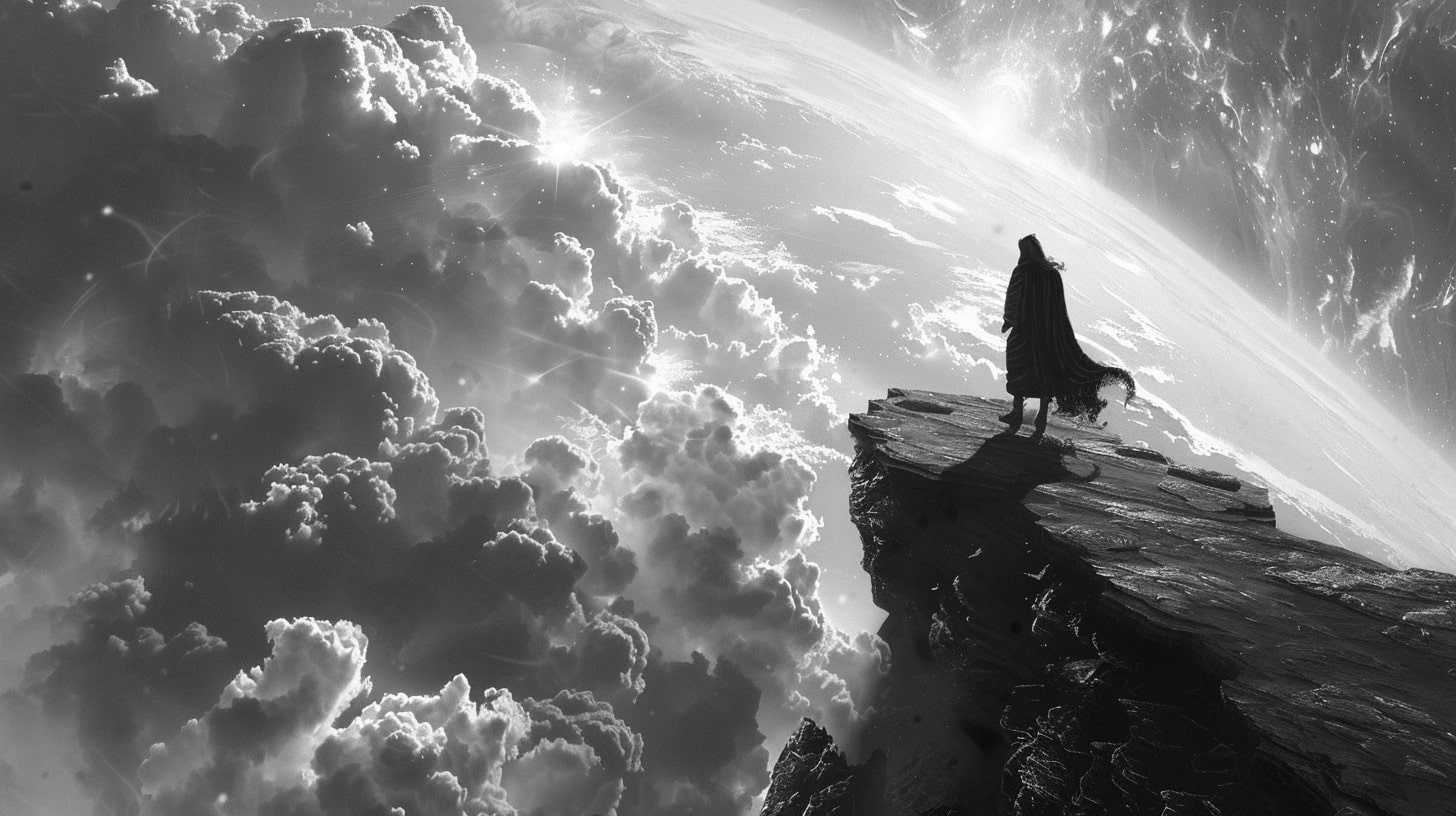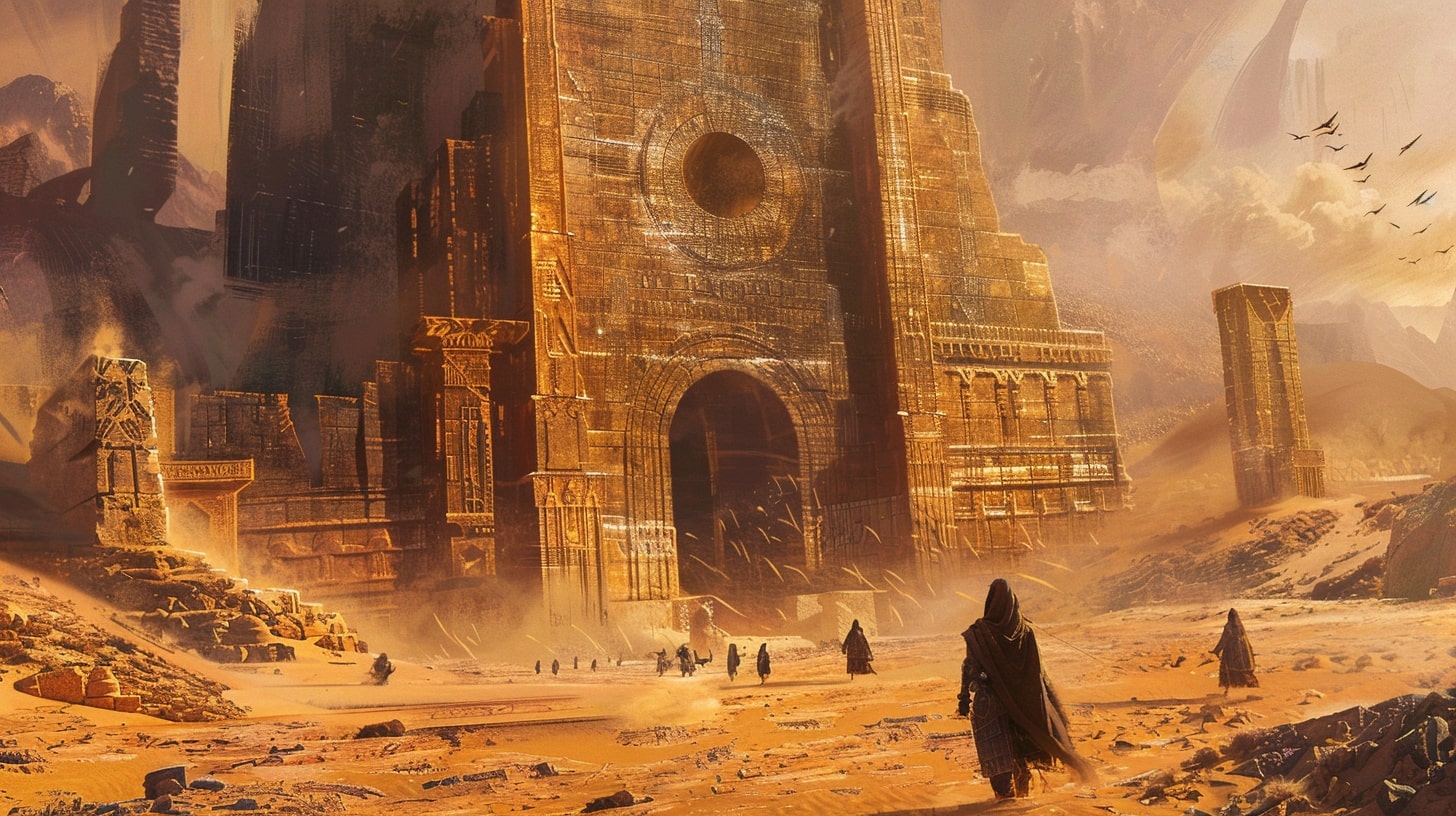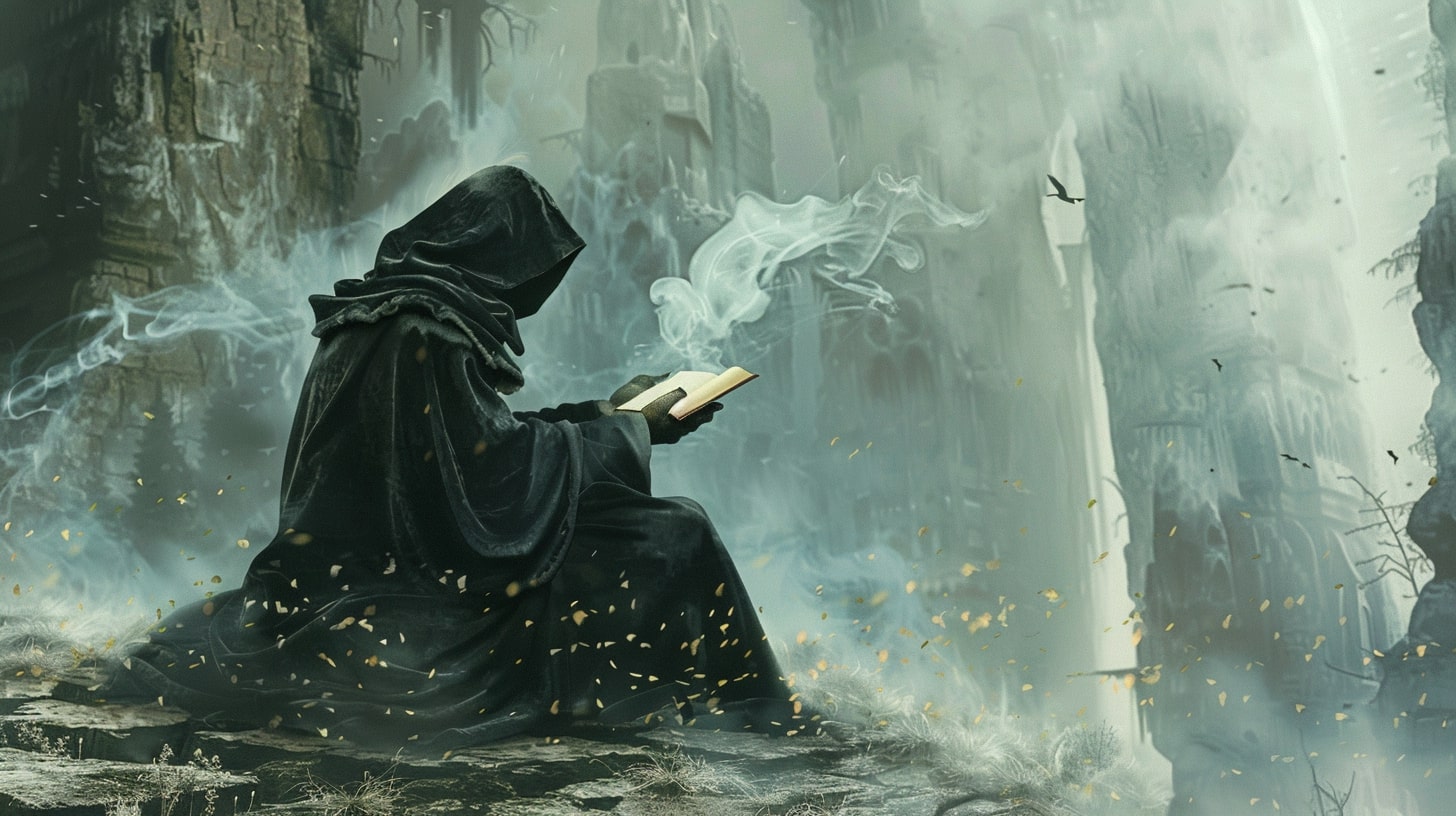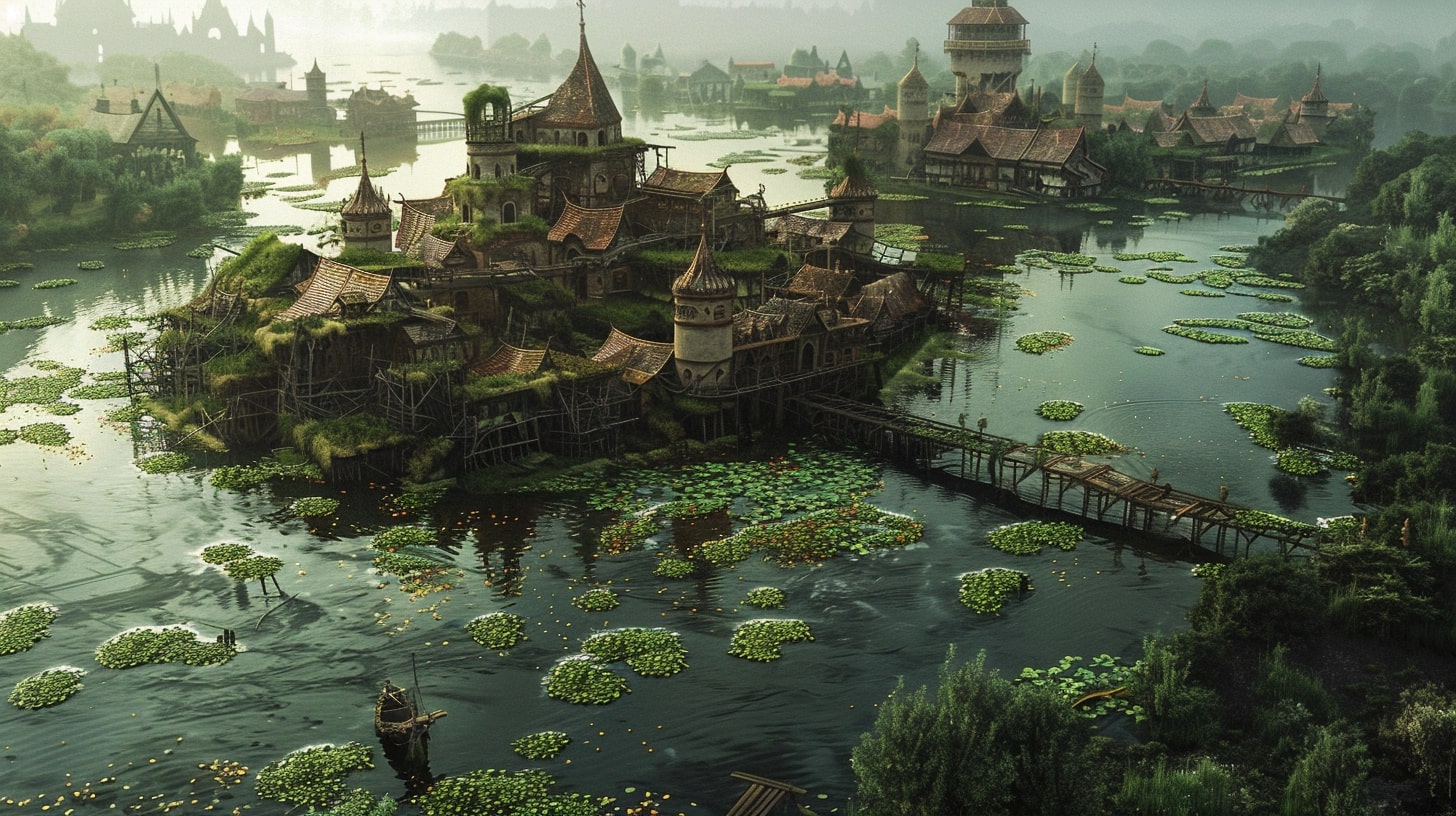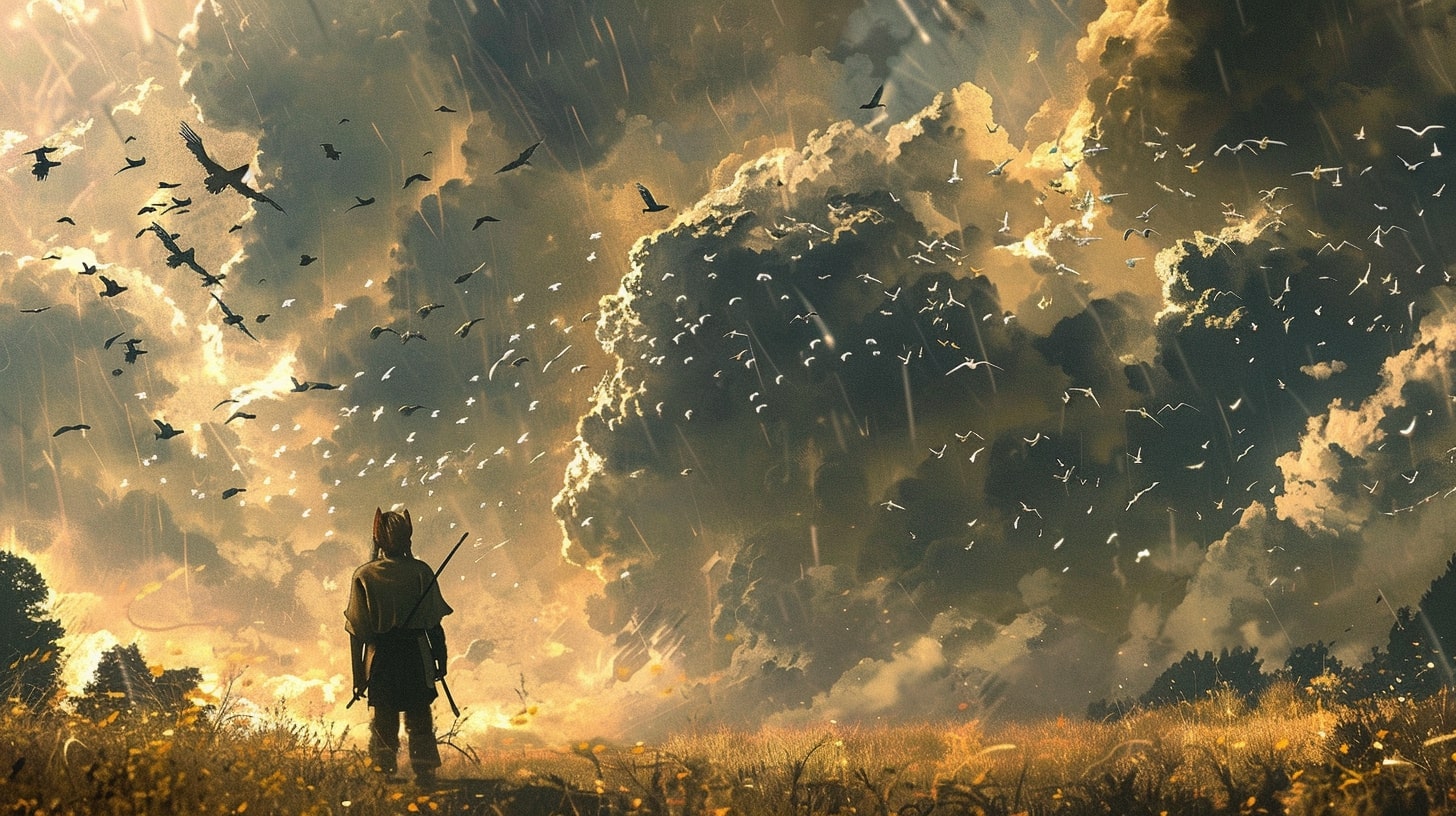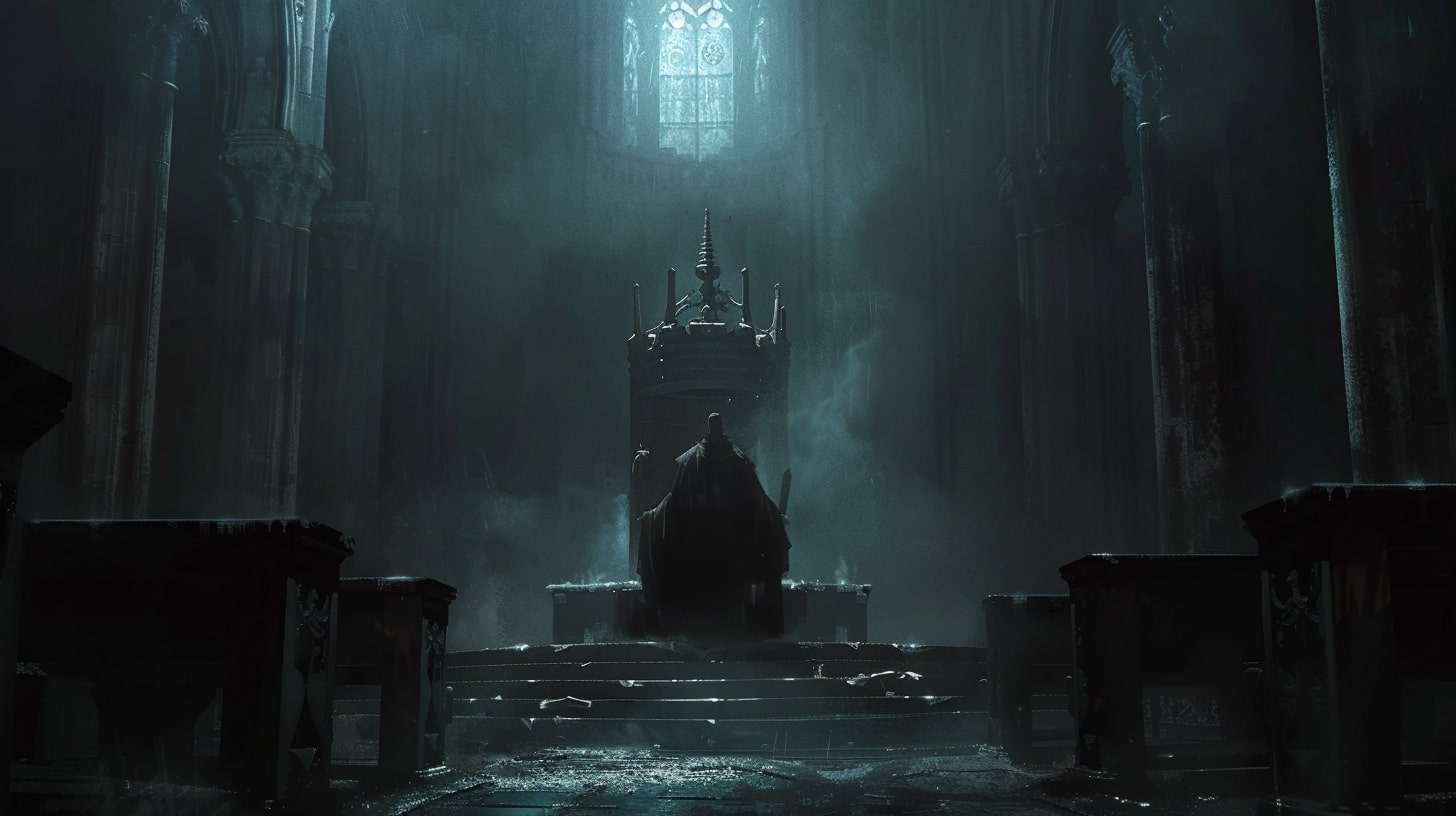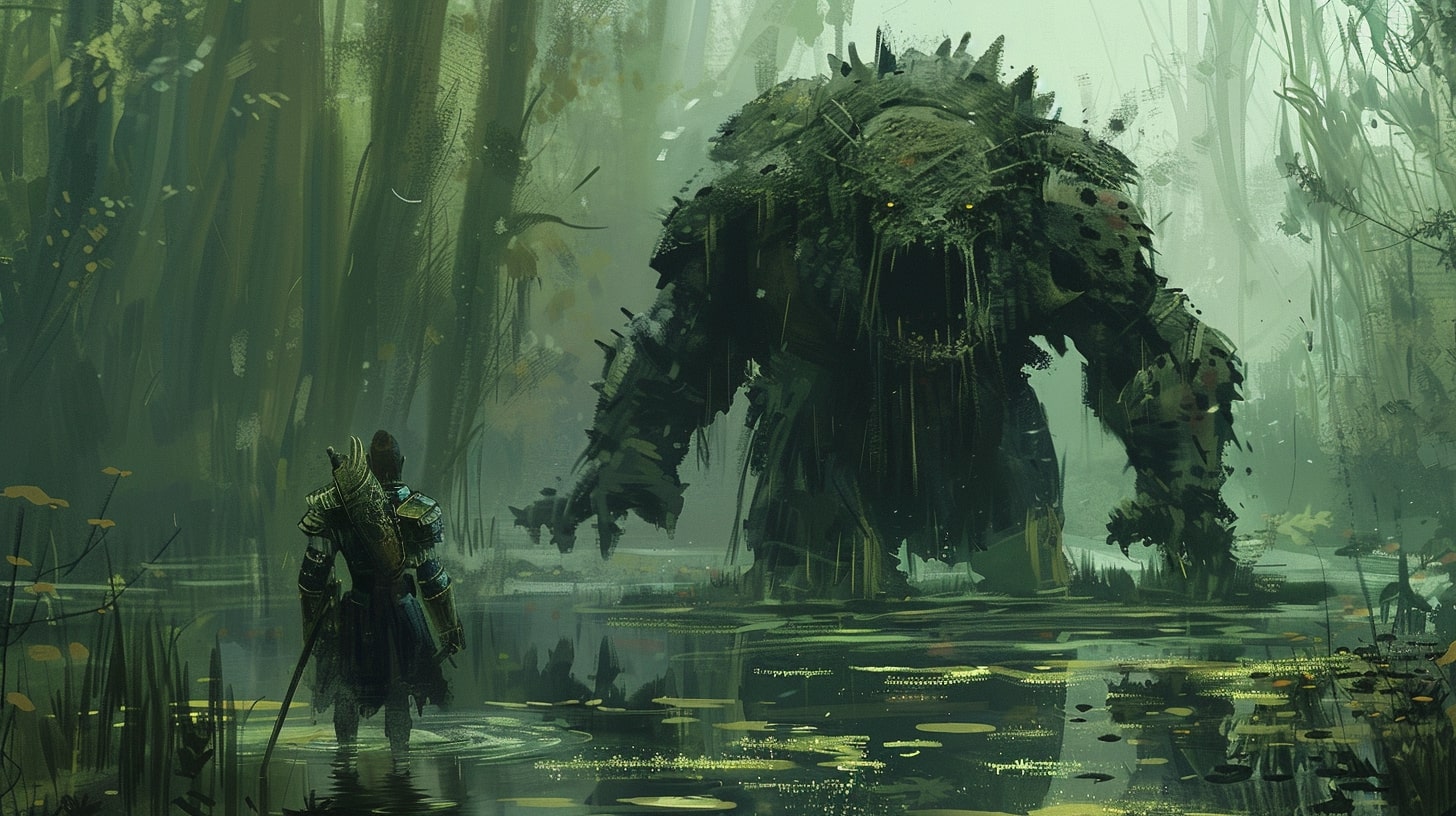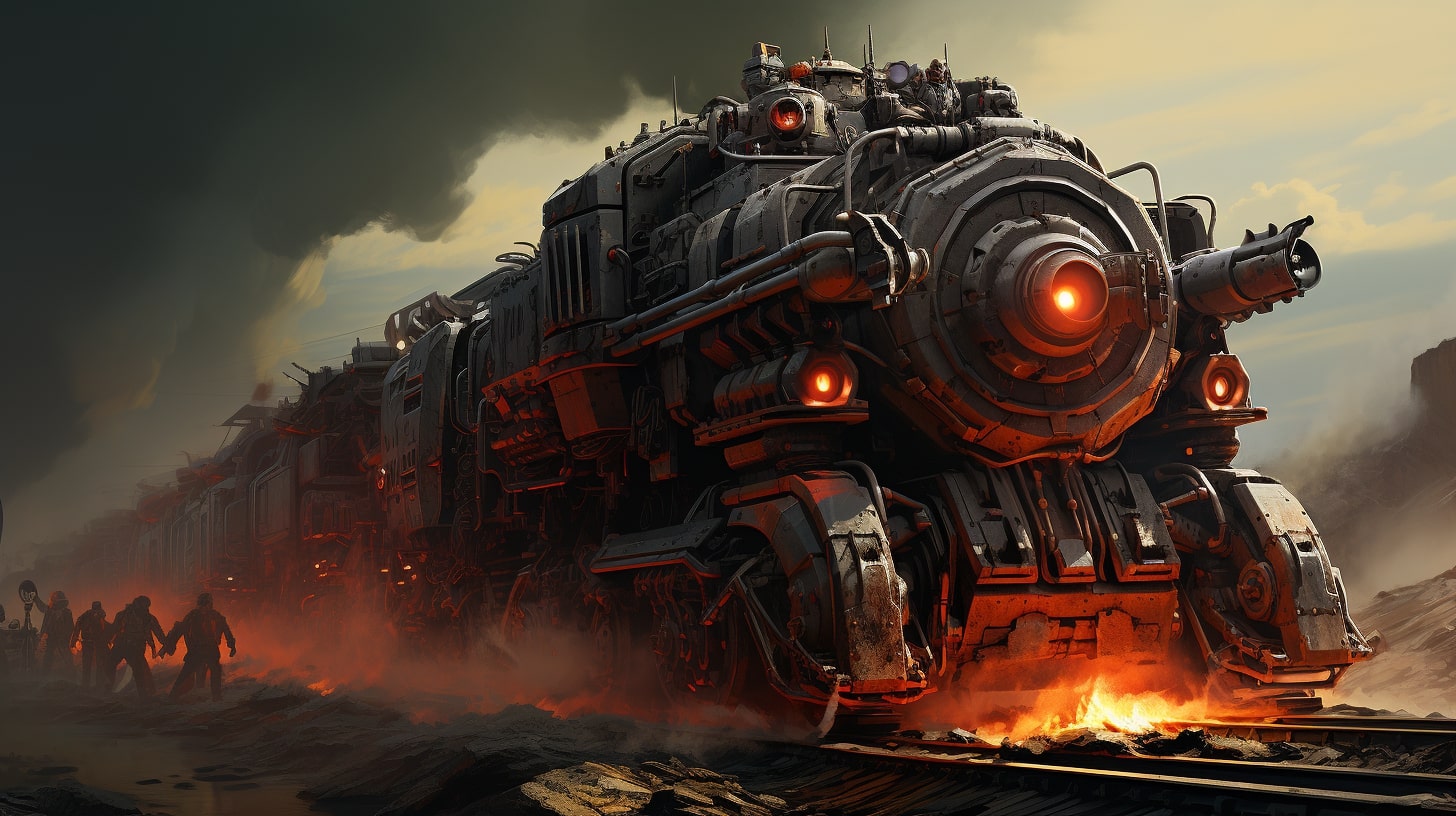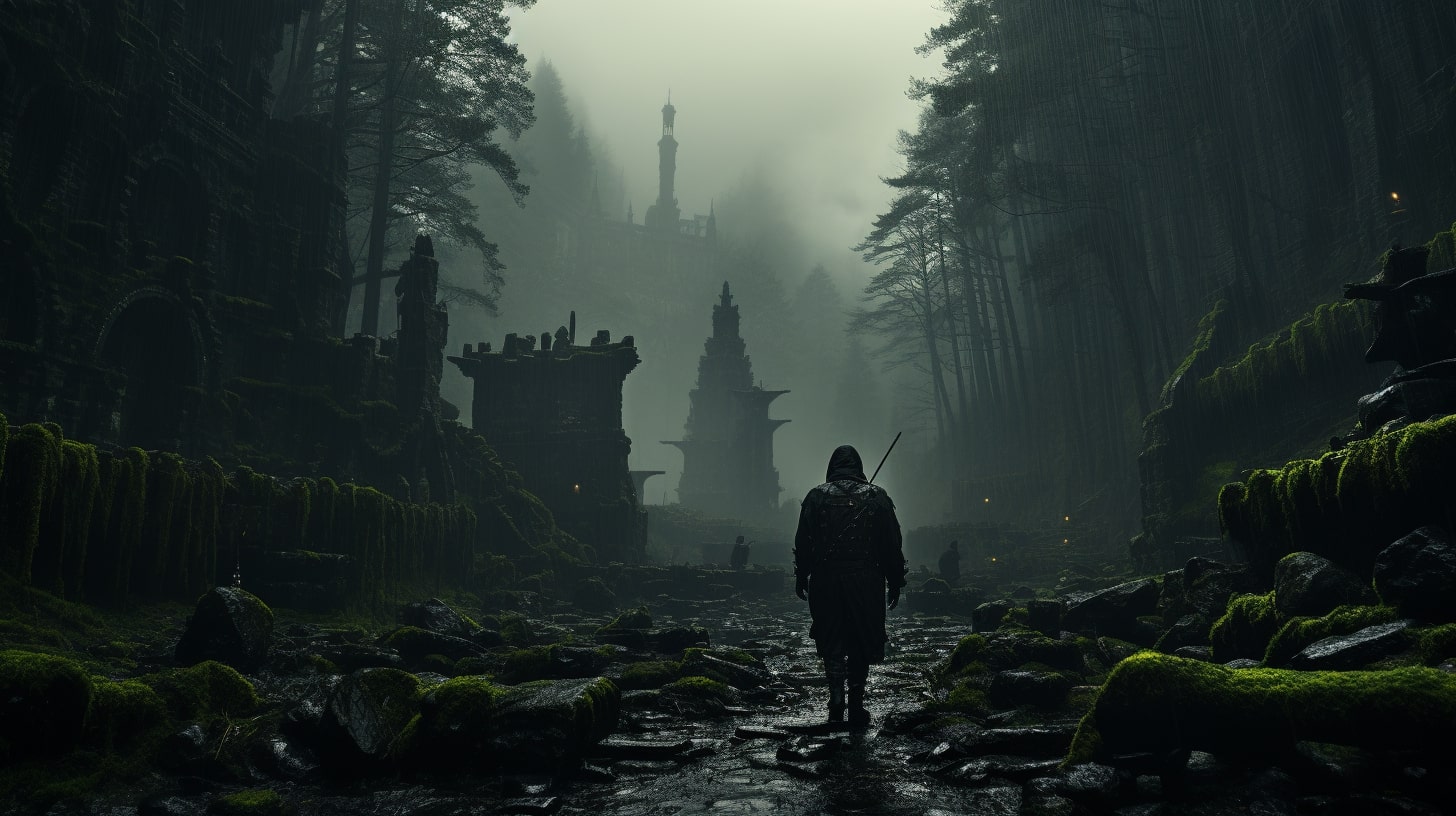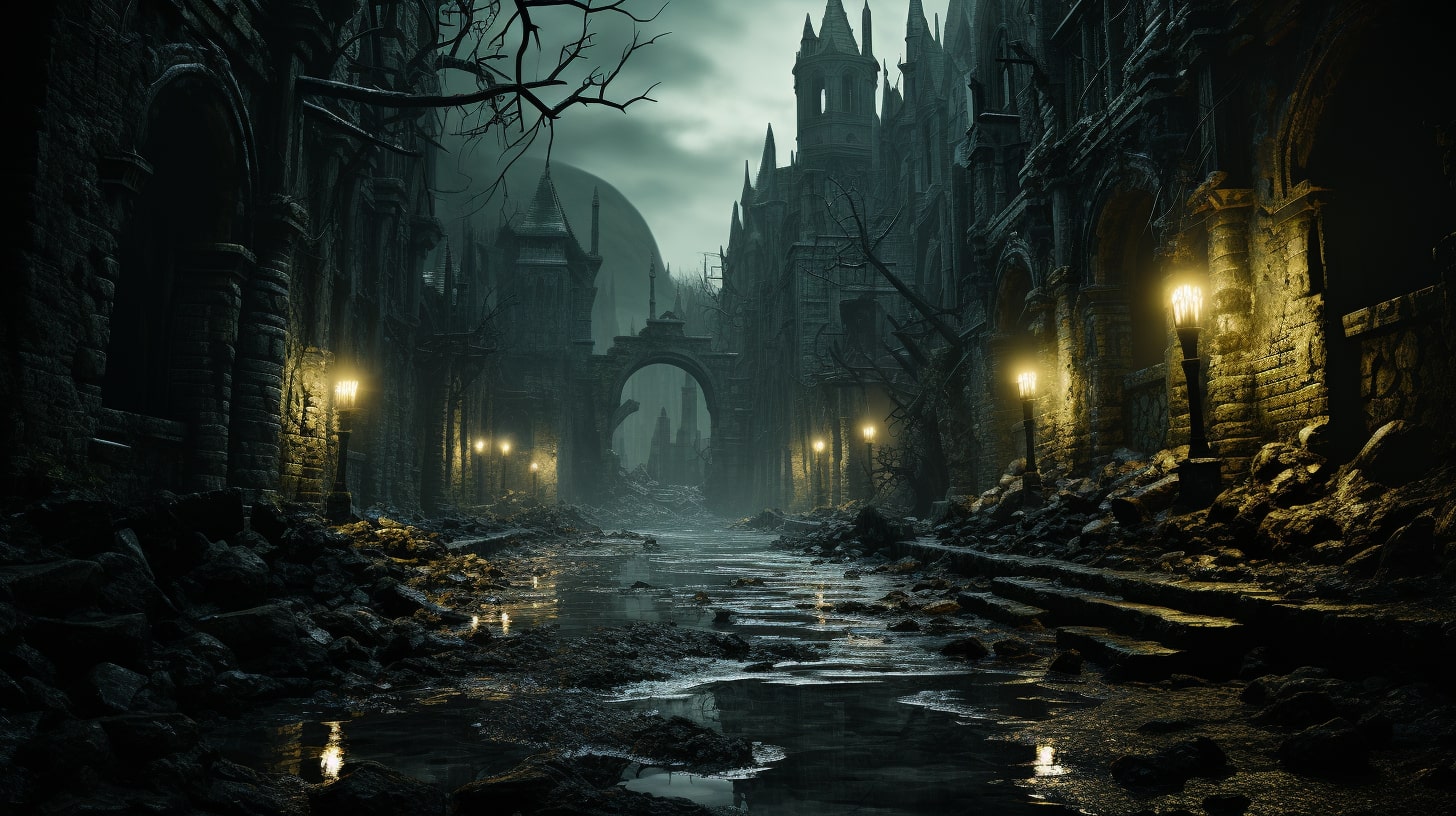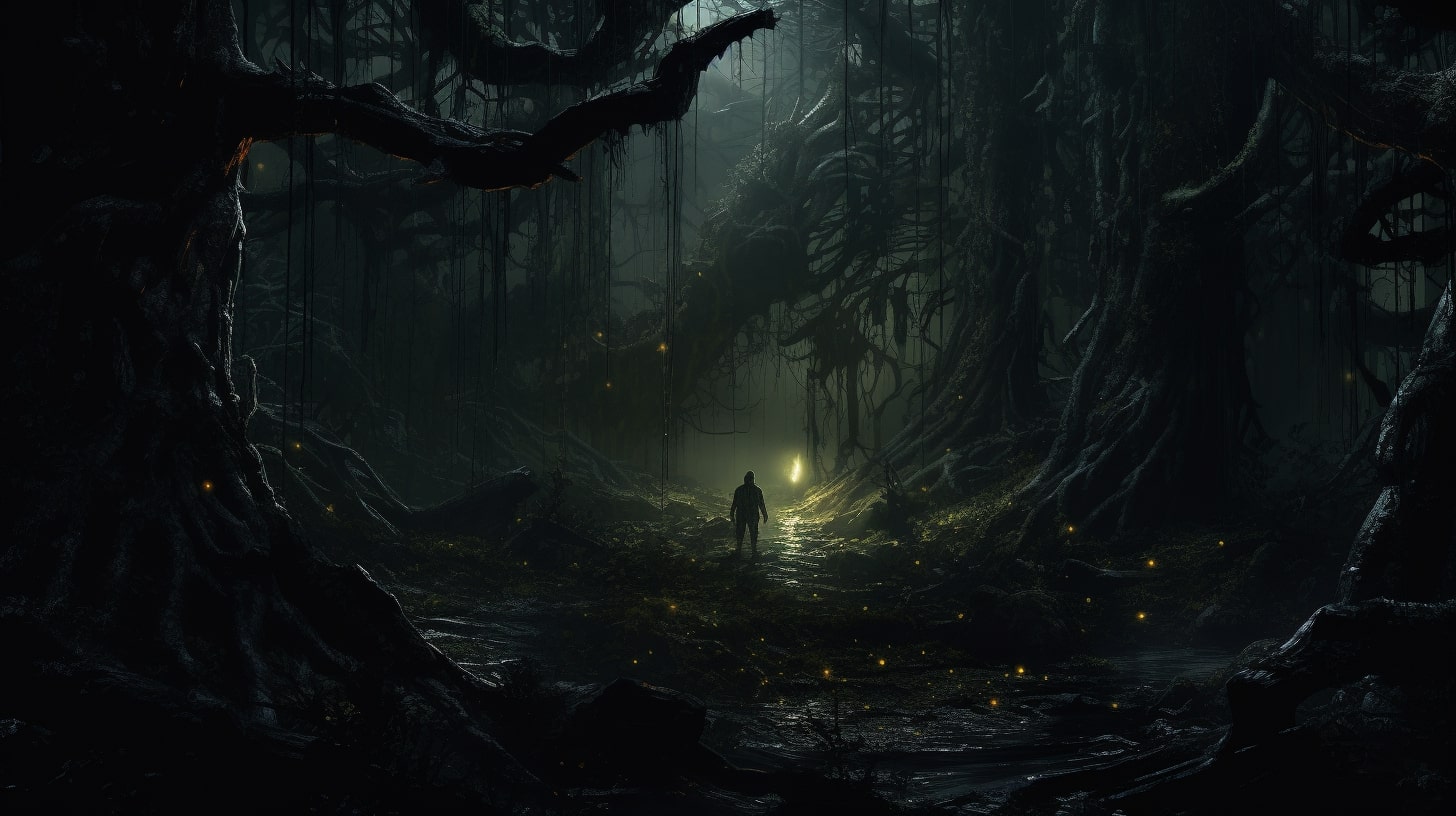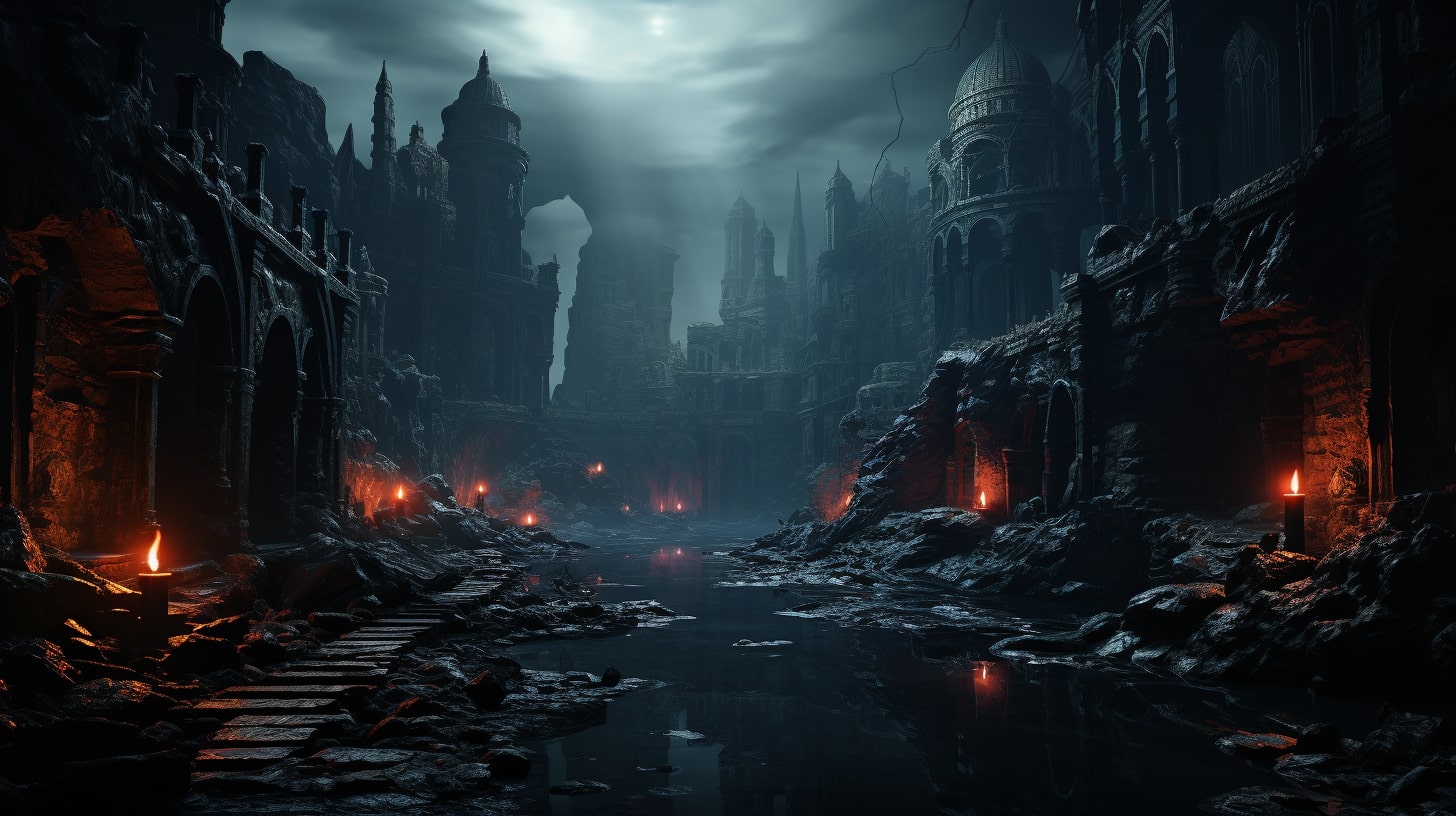The Art of Worldbuilding
In the realm of fantasy writing, worldbuilding is a fundamental aspect that allows you to create rich and immersive fictional worlds for your readers to explore.
It involves constructing intricate settings, cultures, and histories that bring your story to life. One of my favorite aspects of worldbuilding is creating cities.
You might find yourself ONLY worldbuilding cities depending on the scale of them but before we dive into that let’s refresh our memories about worldbuilding itself.
What is Worldbuilding?
Worldbuilding is the process of constructing an imaginary world or setting for your story. It involves creating every aspect of this world, including its geography, climate, history, cultures, societies, and more. By meticulously crafting these elements, you can transport your readers into a fully realized and believable world that captures their imagination.
Worldbuilding is not limited to physical aspects alone. It also encompasses intangible elements such as magic systems, political structures, religions, and mythologies. These components contribute to the depth and complexity of your fictional world, making it feel authentic and captivating.
To get started with worldbuilding, you can explore worldbuilding ideas and worldbuilding prompts to spark your creativity. Additionally, our comprehensive worldbuilding guide and worldbuilding checklist can provide you with valuable insights and assistance throughout the process.
Importance of Worldbuilding in Fantasy Writing
Worldbuilding plays a crucial role in fantasy writing for several reasons. It not only enhances the overall reading experience but also contributes to the authenticity and believability of your story. Here are a few key reasons why worldbuilding is important:
Immersion and Engagement: By creating a detailed and captivating world, you can immerse your readers in a unique and enchanting environment. This allows them to feel fully engaged with the story and its characters, fostering a deeper connection and investment.
Atmosphere and Ambiance: Through worldbuilding, you can establish the atmosphere and ambiance of your fictional world. Descriptions of landscapes, cities, and cultures can evoke distinct moods and emotions, further enhancing the reader’s experience.
Consistency and Coherence: Worldbuilding ensures consistency and coherence within your story’s universe. By establishing rules, systems, and histories, you create a cohesive framework that guides the narrative and prevents plot holes or inconsistencies.
Character Development and Relationships: The world you build can influence your characters’ backgrounds, beliefs, and motivations. It shapes their interactions, relationships, and conflicts, adding depth and complexity to their development.
Unique Storytelling Opportunities: A well-crafted world provides you with endless storytelling opportunities. You can explore various themes, conflicts, and plotlines that are unique to your world, making your story stand out and capturing the imagination of your readers.
In the realm of fantasy writing, worldbuilding is an essential tool that allows you to create captivating and unforgettable stories. By crafting a detailed and immersive world, you can transport your readers to places of wonder and ignite their imagination. So, embrace the art of worldbuilding and unleash the full potential of your storytelling abilities.
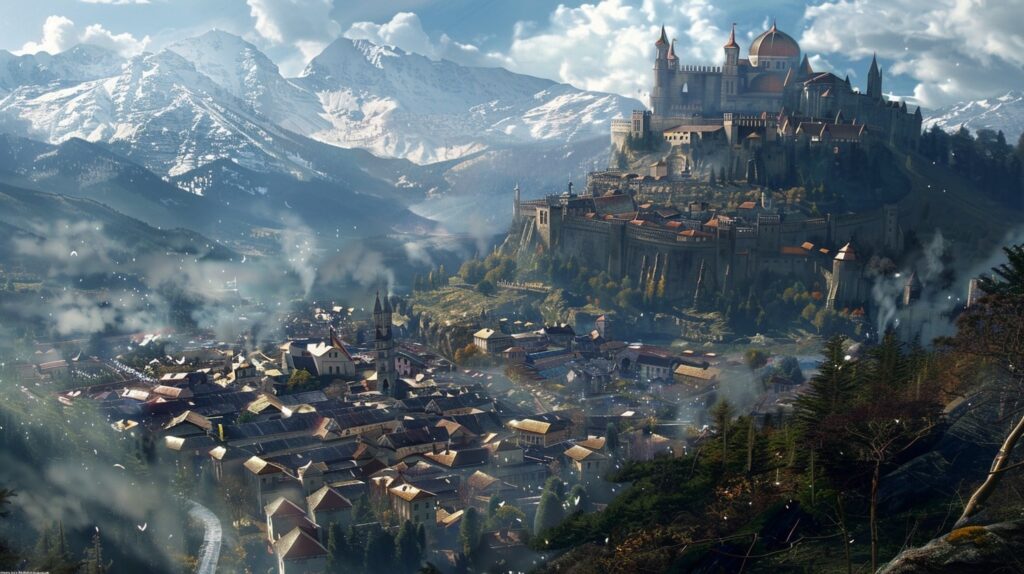
Worldbuilding Cities: Creating Captivating Cities
In the realm of worldbuilding, cities play a crucial role in shaping the overall narrative and captivating readers’ imaginations. As you embark on the journey of creating your own fictional cities, it’s important to understand their significance and consider key elements that contribute to their allure.
Understanding the Role of Cities in Worldbuilding
Cities within your world serve as more than just backdrops for your story; they are living, breathing entities that can shape the plot, influence characters, and provide a sense of scale and depth to your world. Cities can be centers of power, trade, culture, or even conflict. By understanding the role cities play in your world, you can create more immersive and engaging narratives.
Cities can act as hubs of political intrigue, where various factions vie for power and control. They can serve as melting pots of diverse cultures, showcasing the clash and fusion of different traditions and beliefs. Additionally, cities can be vibrant centers of trade and commerce, attracting merchants, artisans, and travelers from all corners of your world. Understanding the unique role each city plays will allow you to create a more dynamic and realistic world.
Neon Zanadu makes no sense just because I created it, but it begins to make sense once I add the history behind it.
Elements to Consider when Building Cities
When building captivating cities, there are several key elements to consider that will help breathe life into your world. These elements include:
Geography and Location: The geographical features and location of a city can greatly influence its development and character. Is it nestled in a lush valley, perched atop a mountain, or built along a bustling coastline? Understanding the natural surroundings of a city will add depth and authenticity to your world.
Architecture and Design: The architectural style and design of your city can reflect the culture, history, and aesthetics of the inhabitants. Consider the materials used, the layout of the streets, and the overall visual appeal of the buildings. For inspiration, you can explore different architectural styles from various cultures and adapt them to fit your world. Check out our article on worldbuilding architecture for more insights.
Culture and Society: A city’s culture and society are shaped by its inhabitants. Consider the customs, traditions, beliefs, and social hierarchy of the people who reside in your city. This will influence the city’s festivals, rituals, social norms, and even its cuisine. Developing a distinct culture and society will make your city feel alive and immersive.
Economy and Trade: Understanding the economic aspects of your city is important for creating a realistic world. Consider the resources available, the major industries, and the trade connections that sustain the city’s economy. This can add depth to your world and create opportunities for unique storylines.
History and Lore: Every city has a story to tell. Develop a rich history that spans generations, including significant events, legends, and myths. By incorporating history and lore into your cities, you can give them a sense of depth and make them feel like they have been a part of your world for a long time.
By considering these elements, you can create captivating cities that are integral to your worldbuilding process. Remember to weave these cities seamlessly into your narrative, allowing them to shape the story and captivate your readers’ imagination.
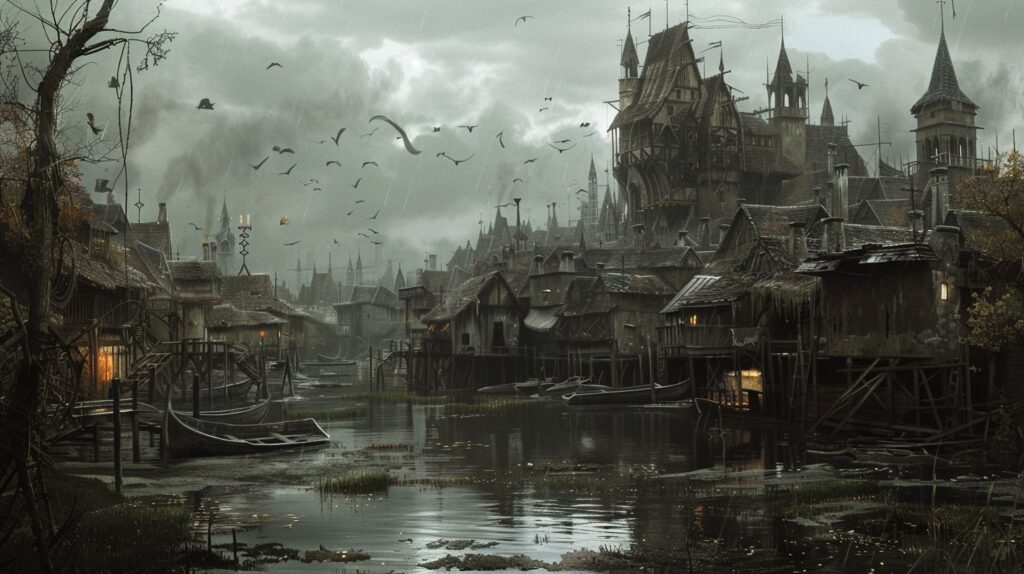
Cityscapes of Wonder
As a fantasy author, worldbuilding cities allows you to unleash your creativity and transport readers to captivating and immersive settings. When crafting your cities, there are several aspects to consider to make them truly extraordinary. In this section, we will explore three key elements of cityscapes: imagining unique architectural styles, designing intricate city layouts, and developing distinct cultures and societies.
Imagining Unique Architectural Styles
One of the most exciting aspects of worldbuilding cities is imagining unique architectural styles that reflect the culture and history of your fictional world. Consider the materials, shapes, and aesthetics that define the buildings in your city. Are they grand and ornate, showcasing intricate details? Or perhaps they are minimalistic and modern, characterized by simplicity and clean lines?
You can draw inspiration from various real-world architectural styles or create your own. Whether it’s towering spires, sprawling palaces, or quaint cottages, the architectural style you choose will help bring your city to life and immerse readers in its distinct atmosphere.
Designing Intricate City Layouts
The layout of a city plays a crucial role in its functionality and atmosphere. When designing your city’s layout, consider the needs of its inhabitants and the history of its development. Are the streets narrow and winding, reflecting an ancient city with organic growth? Or are they wide and structured, showcasing a well-planned and orderly society?
Think about the different districts and neighborhoods within your city. Are there distinct areas for residential, commercial, and industrial purposes? How do these areas interact with each other? Mapping out the streets, landmarks, and key locations within your city will not only help you visualize it but also provide a valuable reference for your writing.
Developing Distinct Cultures and Societies
Cities are not just made up of buildings and streets; they are home to diverse cultures and societies. Developing distinct cultures within your city will add depth and richness to your world. Consider the customs, traditions, and values of the inhabitants. What are their beliefs and social structures? How do these cultural aspects influence the architecture, fashion, and daily life within the city?
Creating diverse societies within your city will also allow you to explore the dynamics and interactions between different groups. Are there tensions or alliances between cultural factions? How do these relationships shape the city’s politics and social fabric?
By crafting unique architectural styles, designing intricate city layouts, and developing distinct cultures and societies, you can create cityscapes of wonder that captivate readers and transport them to your fictional world. Remember to leverage the power of descriptive language to bring your cities to life and make them truly unforgettable. For more inspiration on worldbuilding, check out our articles on worldbuilding architecture, worldbuilding cultures, and worldbuilding societies.
Breathing Life into City Characters
To create a truly immersive and captivating city in your worldbuilding, it’s essential to populate your cities with diverse characters and ensure that their interactions and relationships feel believable. This adds depth and realism to your cityscape, making it come alive for your readers.
Populating Cities with Diverse Characters
A vibrant city should be home to a wide array of characters, each with their own unique backgrounds, personalities, and motivations. When populating your city, consider including characters from different races, ethnicities, social classes, and professions. This diversity not only reflects the richness of real-world cities but also adds depth and complexity to your fictional world.
Creating diverse characters allows you to explore various perspectives and experiences, making your city feel dynamic and realistic. Think about the different roles individuals might play in the city, such as merchants, artisans, political leaders, and street performers. Giving each character a distinct voice and backstory can help bring them to life, making them relatable and compelling to your readers.
Creating Believable Interactions and Relationships
In a bustling city, characters are constantly interacting with one another, shaping the social fabric of the urban landscape. To make these interactions feel authentic, it’s crucial to consider the dynamics between characters and the relationships they form.
Think about how characters from different backgrounds and social classes might interact with one another. Are there tensions or conflicts between certain groups? Are there friendships or alliances formed across social divides? These dynamics can add depth and complexity to your city, reflecting the intricacies of real-world human relationships.
To create believable relationships, consider the characters’ shared history, common goals, or conflicting interests. Develop their interactions in a way that feels organic and true to their personalities and motivations. This will help your readers to emotionally invest in the characters and their stories, making your city feel all the more real.
By populating your city with diverse and well-developed characters and crafting believable interactions and relationships between them, you can breathe life into your cityscape and make it an immersive experience for your readers. Don’t be afraid to explore the complexities of human nature and the dynamics of social interaction within your city. For more worldbuilding tips and resources, check out our article on worldbuilding for writers.
Inspiring City Adventures
When it comes to worldbuilding cities, inspiring city adventures are an essential aspect to consider. These adventures not only add excitement to your story but also allow your readers to explore the intricacies of your created city. In this section, we will explore two key elements to help you create engaging city adventures: plotting engaging city quests and challenges and incorporating city history and lore.
Plotting Engaging City Quests and Challenges
To make your city adventure captivating, you need to create quests and challenges that immerse your readers in the world you’ve built. Consider the unique aspects of your city and how they can shape the adventures that take place within it. Here are a few ideas to get you started:
Mysterious Artifact: Introduce a quest where characters must search the city for a hidden artifact with extraordinary powers. This quest can involve solving riddles, deciphering clues, and facing obstacles along the way.
Political Intrigue: Create a challenge centered around the political landscape of your city. Characters may find themselves caught in a web of deceit, tasked with uncovering a conspiracy or negotiating delicate alliances.
City-wide Tournament: Organize a tournament or competition that takes place throughout the city. Characters can participate in events such as combat, skill challenges, or intellectual contests, showcasing their abilities while navigating the various districts of the city.
Epidemic or Natural Disaster: Develop a quest where the city faces a crisis, such as a deadly epidemic or a natural disaster. Characters must find a way to save the city, whether it’s through finding a cure, rescuing trapped citizens, or mitigating the effects of the disaster.
Remember to consider the motivations and goals of your characters when crafting these quests and challenges. Each adventure should contribute to their development and provide opportunities for them to grow within the city’s unique context.
Incorporating City History and Lore
City history and lore add depth and richness to your world. By incorporating these elements into your city adventures, you create a sense of continuity and immersion for your readers. Here’s how you can do it:
Legendary Figures: Introduce legendary figures from the city’s past. Characters can uncover their stories, visit their monuments, or follow in their footsteps. This not only provides a connection to the city’s history but also offers opportunities for character development and inspiration.
Historical Artifacts: Scatter historical artifacts throughout the city that characters can discover during their adventures. These artifacts can hold clues to the city’s past or even possess magical properties that aid the characters in their quests.
Ghostly Encounters: Infuse your city with a touch of mystery by incorporating ghostly encounters. Characters may stumble upon haunted locations, encounter restless spirits, or be tasked with helping a trapped soul find peace. These encounters can shed light on the city’s past and provide a unique twist to their adventures.
Cultural Festivals: Organize cultural festivals within the city, celebrating its history, traditions, and unique customs. Characters can participate in these events, learn about the city’s culture, and perhaps uncover hidden secrets or quests tied to the festivities.
By incorporating city history and lore into your adventures, you create a sense of authenticity and give your readers a deeper understanding of the world you’ve built.
As you develop your city adventures, remember to keep the quests and challenges engaging, and weave in the rich history and lore of the city. This will ensure that your readers are captivated by the adventures unfolding within your meticulously crafted world. For more worldbuilding ideas and inspiration, be sure to check out our article on worldbuilding ideas.
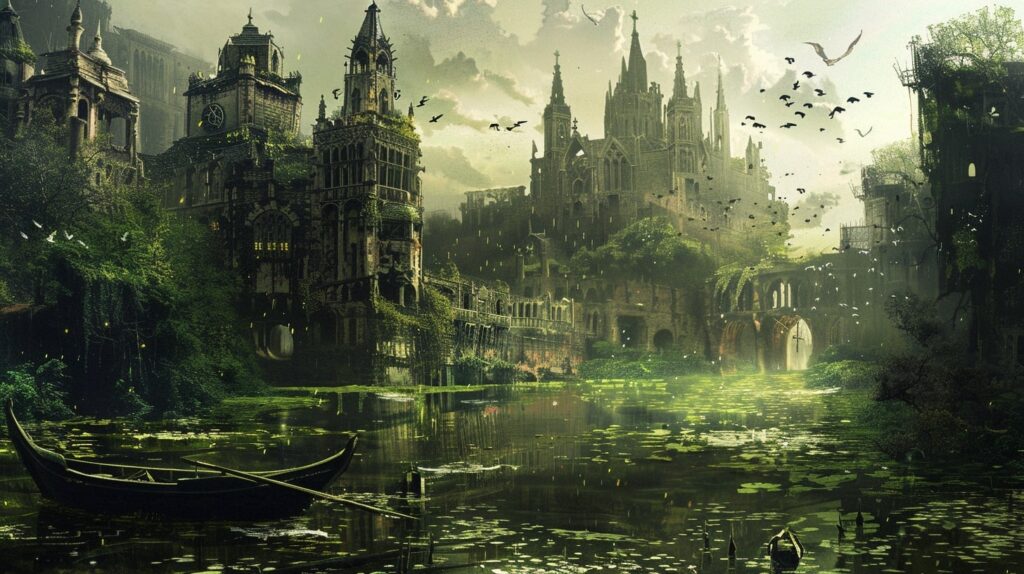
Showcasing City Atmosphere
To create a truly immersive world in your writing, it’s important to capture the essence of city ambiance. The atmosphere of a city can greatly influence the overall feel and mood of your story. By using descriptive language and evocative details, you can bring your cities to life and transport your readers to these vibrant urban landscapes.
Capturing the Essence of City Ambiance
When showcasing the atmosphere of a city in your worldbuilding, it’s essential to pay attention to the sensory details that define its character. Consider the following aspects:
Sounds: Describe the cacophony of a bustling marketplace, the echoes of footsteps on cobblestone streets, or the distant hum of traffic. These auditory details can help immerse your readers in the city’s vibrant energy.
Smells: Bring the scents of the city to life by describing the aroma of freshly baked bread from a local bakery, the pungent spices wafting from a street food stall, or the subtle scent of rain on a wet pavement. These olfactory cues can transport your readers to the heart of your city.
Sights: Paint a vivid picture of the cityscape, describing the towering skyscrapers, winding alleyways, or grand architectural landmarks. Pay attention to the play of light and shadow, the vibrant colors of street art, or the flickering neon signs that illuminate the night.
Textures: Engage your readers’ sense of touch by describing the gritty cobblestones underfoot, the smooth marble of a grand plaza, or the rough bark of ancient trees lining a park. These tactile details can make your city feel tangible and real.
By carefully selecting and incorporating these sensory details, you can create a rich and immersive atmosphere that transports your readers to the heart of your city.
Using Descriptive Language to Bring Cities to Life
Descriptive language is a powerful tool for breathing life into your cities. Consider using vivid adjectives, strong verbs, and figurative language to paint a detailed picture of your urban landscapes. Here are a few techniques to enhance your descriptions:
Similes and metaphors: Compare elements of your city to something familiar, such as describing the soaring skyscrapers as “giants reaching for the sky” or the bustling streets as “rivers of people flowing through the city”.
Personification: Bring the city to life by attributing human characteristics to its elements. For example, you could describe the city’s skyline as “dancing with twinkling lights” or the city streets as “breathing with the rhythm of life”.
Specificity: Use specific and concrete details to make your descriptions more vivid. Instead of saying “the buildings were tall,” try “the buildings soared like glass and steel monoliths, casting long shadows over the crowded streets below.”
Remember to strike a balance between providing enough detail to immerse your readers in the cityscape and allowing their imaginations to fill in the gaps. By using these techniques, you can create an atmospheric backdrop that enhances the overall storytelling experience.
As you delve into the world of city atmosphere, consider the unique architectural styles, intricate layouts, and distinct cultures and societies that make up your cities. Each of these elements contributes to the overall ambiance and can further enrich your worldbuilding. For more insights and inspiration on worldbuilding, check out our articles on worldbuilding inspiration and worldbuilding techniques.


